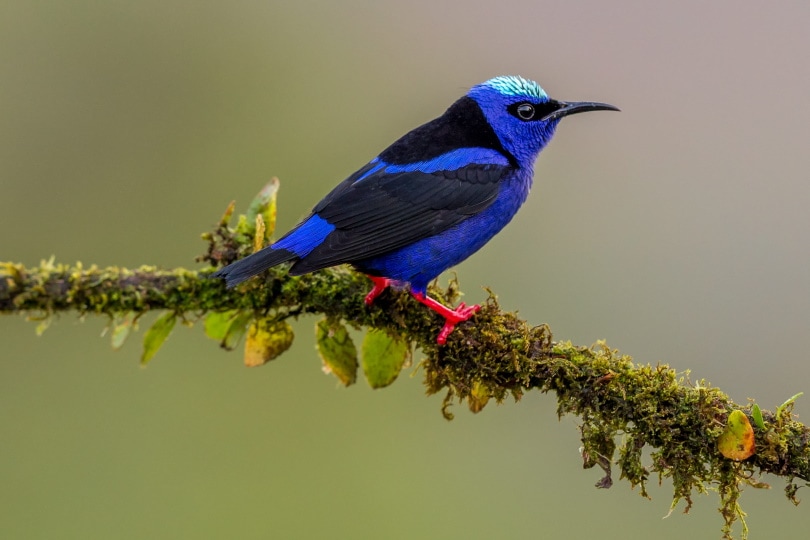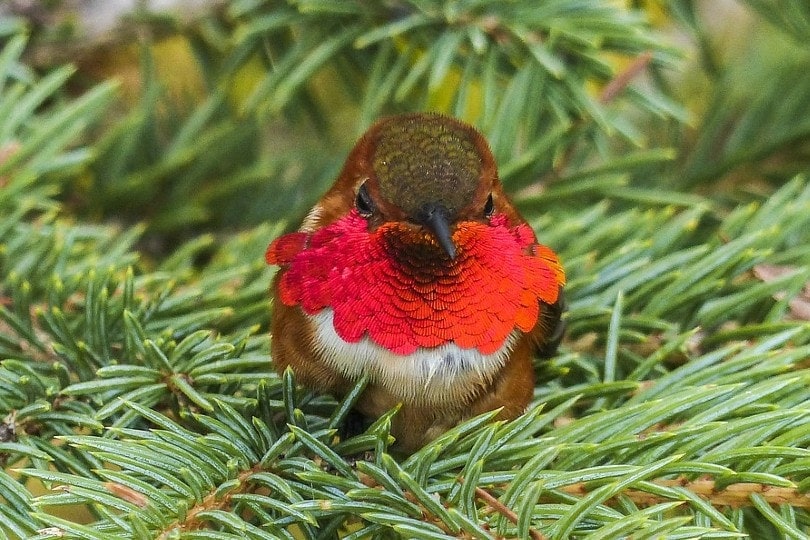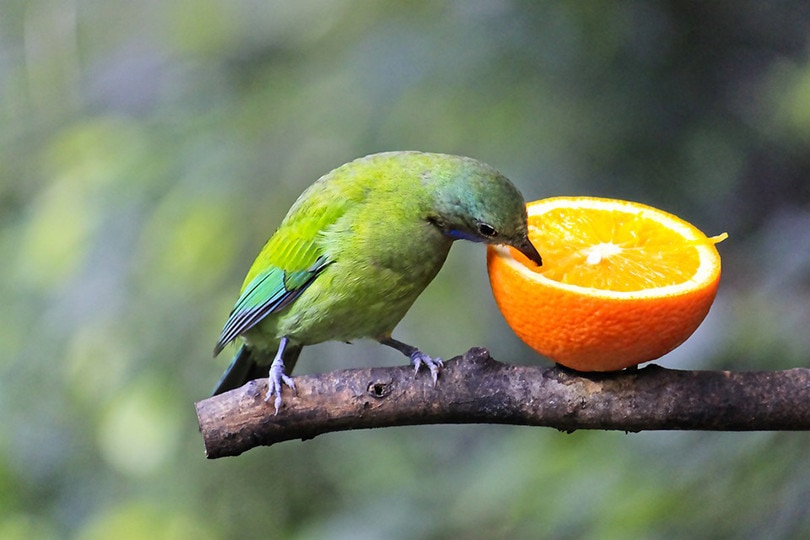Are Birds Warm-Blooded? The Surprising Answer!
Last Updated on

Yes, birds are warm-blooded animals, otherwise known as endotherms. An endotherm is any animal that has the ability to maintain the same body temperature, even if the temperature in its immediate surroundings keeps on fluctuating. This group primarily includes birds and mammals, but there are some endothermic fish species too.
How are birds able to control their internal temperature?
They have a gland that technically works like a thermostat—the hypothalamus—one of the glands found in the brain, just next to the pituitary gland. Its main function is to release hormones that help maintain physiological cycles, which in turn regulate their body temperatures.

Temperature Regulation
Because birds can maintain a constant body temperature, they are able to comfortably live or survive in different habitats. That’s why you’ll always find at least one species in the desert, seasonal forests, tundra, oceans, and even polar habitats. But unfortunately, it all comes at a cost.
For them to be able to sustain that metabolic heat production process, they have to eat more. Food is the source of energy required to keep that process going, but you cannot tell for sure how much energy is required by the system because it’s often influenced by a number of factors. You must take into consideration habitat, current temperature, and bird species.
To effectively regulate their internal temperature they’ll also need mechanisms specifically designed to shed excess heat or prevent the loss of whatever little’s available.
In other words, if the temperature drops drastically in their surroundings, they’ll have no option but to speed up their metabolic rate. The fuel used in that process will be drawn from the food previously consumed, and the heat generated will essentially serve the same purpose as an internal bonfire.
Conversely, when the external temperature becomes too hot, their bodies start mobilizing water, and it’s through that water that they’ll lose the excess heat that’s making them feel uncomfortable. That process is usually referred to as evaporative cooling.

How’s sweating possible if birds don’t have sweat glands?
The thing is, birds don’t perspire the same way humans do. When they feel too hot, they’ll start panting, and this will help them cool down by allowing heat to be released through their respiratory tracts. If this method is still not as effective as they would have liked, they’ll resort to fluttering their gular area.
All birds have different behavioral and morphological traits that help them regulate the rate at which they gain or lose heat. The Black Vulture is a unique example. Anytime it feels heat-stressed, it’ll excrete onto its legs to cool itself down faster—that’s a behavioral trait.
Their unique morphological trait, on the other hand, is how uninsulated its legs are. Those legs are un-feathered for a reason, and that is to facilitate heat exchange with its surroundings.
Do birds find their un-feathered feet liabilities when the temperature drops?
The downside to not having insulated legs is the fact that they are too exposed to rapid heat loss in cold weather. But the good news is, birds have evolved to counteract this problem.
According to ornithologists, all birds with un-feathered feet have blood vessels that are in contact with each other. This ensures that they are able to create a countercurrent heat transfer system that protects them from freezing temperatures. Here’s how the system works:
The blood flowing from the bird’s trunk to its feet is always warm, as it’s the same temperature as its internal temperature. On the contrary, the blood flowing from its feet to the trunk will always be cooler, because most of the heat has already been lost to its environment.
Allowing that blood to get back to the trunk without heating it up will cause the bird’s body temperature to drop. That could compromise the bird’s health, and ultimately lead to death. To avoid this, the system allows its arterial blood to transfer heat to the venous blood through the vessel membranes.
Another important morphological trait that we cannot forget to talk about is the constriction of the blood vessels that are responsible for supplying blood to their feet. They are relatively narrow, to reduce the amount of blood circulating around that area. Managing small quantities of cooler blood is easier, as opposed to larger quantities.
What a bird does can also determine the amount of heat being lost to its environment. For instance, you’ll find certain species tucking one leg into their breast feathers—while standing on the other—to mitigate the problem of heat loss. Some will even sit down and cover both legs.

Cold-Blooded Animals
A cold-blooded animal is any animal that can’t move from point A to point B without changing its temperature. Its body temperature will keep on fluctuating if the surrounding temperature is constantly changing. What that means is that you’ll never find them in places that have extreme temperatures, because they already know they won’t be able to survive.
Cold-blooded animals often exhibit one of the three thermoregulation techniques: Heterothermy, Poikilothermy, or Ectothermy.
We say an animal is ectothermic if it relies on an external source of energy like the sun to regulate its body temperature. A poikilothermic animal has varying body temperature, but its average temperature will be the same as the surrounding ambient temperature. Lastly, we have heterothermic animals, which are animals that have the ability to change their body temperatures drastically.
Examples of cool-blooded animals include amphibians, insects, fish, reptiles, and several other invertebrates.
- Related Read: Are Birds Mammals? What You Need to Know!

Conclusion
One question that’s often asked is, why do birds have to migrate, if they’re warm-blooded? So we thought it’d be a good idea to wrap this up, by answering this question.
Usually, birds migrate to satisfy basic needs. They’ll migrate in search of food, favorable breeding grounds, or to provide safety for their nestlings. Changing weather and temperatures could be a reason, but it’s never one of the main reasons.
Featured Image Credit: Piqsels
About the Author Robert Sparks
Robert’s obsession with all things optical started early in life, when his optician father would bring home prototypes for Robert to play with. Nowadays, Robert is dedicated to helping others find the right optics for their needs. His hobbies include astronomy, astrophysics, and model building. Originally from Newark, NJ, he resides in Santa Fe, New Mexico, where the nighttime skies are filled with glittering stars.
Related Articles:
10 Types of Hummingbirds in Arkansas (With Pictures)
8 Types of Hummingbirds in Nebraska (With Pictures)
5 Types of Hummingbirds in Idaho (With Pictures)
3 Types of Hummingbirds in Mississippi (With Pictures)
8 Types of Hummingbirds in Kansas (With Pictures)
5 Types of Hummingbirds in West Virginia (With Pictures)
5 Types of Hummingbirds in Ohio (With Pictures)
Where Do Nuthatches Nest? Nuthatch Nesting Habits Explained
